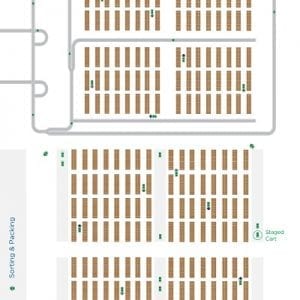
View original at www.mmh.com
Other Voices in the News Other Voices: To get the most out of robots, optimize your people Other Voices: How to meet peak product demand with efficient pallet flow rack Other Voices: Shifting U.S. consumer behavior in the face of Covid-19 Other Voices: Safety managers must act now to prevent return-to-work injuries after Covid-19 Other Voices: Life after COVID-19 will require new thinking for new realities More Other Voices News One 3PL’s Journey to Growth and Efficiency with Mobile Barcode Scanning Thursday, June 18, 2020 | 2 PM ET All Resources Editor’s note: The following column by Justin Ritter, director of project engineering, and Ron May, principal engineer for Lucas Systems, is part of Modern’s Other Voices column, a series featuring ideas, opinions and insights from end-users, analysts, systems integrators and OEMs. Click here to learn about submitting a column for consideration. ————- A 2019 report from ABI Research predicted that warehouses and distribution centers would install more than 4 million commercial robots by 2025 (this includes picking robots, autonomous AGVs, AS/RS and other types of automation). Much of the expected growth is for autonomous mobile robots (AMRs) that rely on human workers to pick and place products. Like any emerging technology, growing adoption of AMRs will depend on buyers being able to cost-justify the robotic solutions for their operations. Paradoxically, a key to improving the business case for AMRs is to optimize and more fully coordinate the work performed by people alongside their robotic helpers. Better optimization of human activities will reduce the number of robots needed per worker. Put another way, by optimizing the work of people working alongside robots, DCs will need fewer robots to achieve the same level of throughput. Three categories of AMR Since acquiring Kiva’s iconic orange robots in 2013 , Amazon has […]



Leave a Reply
You must be logged in to post a comment.